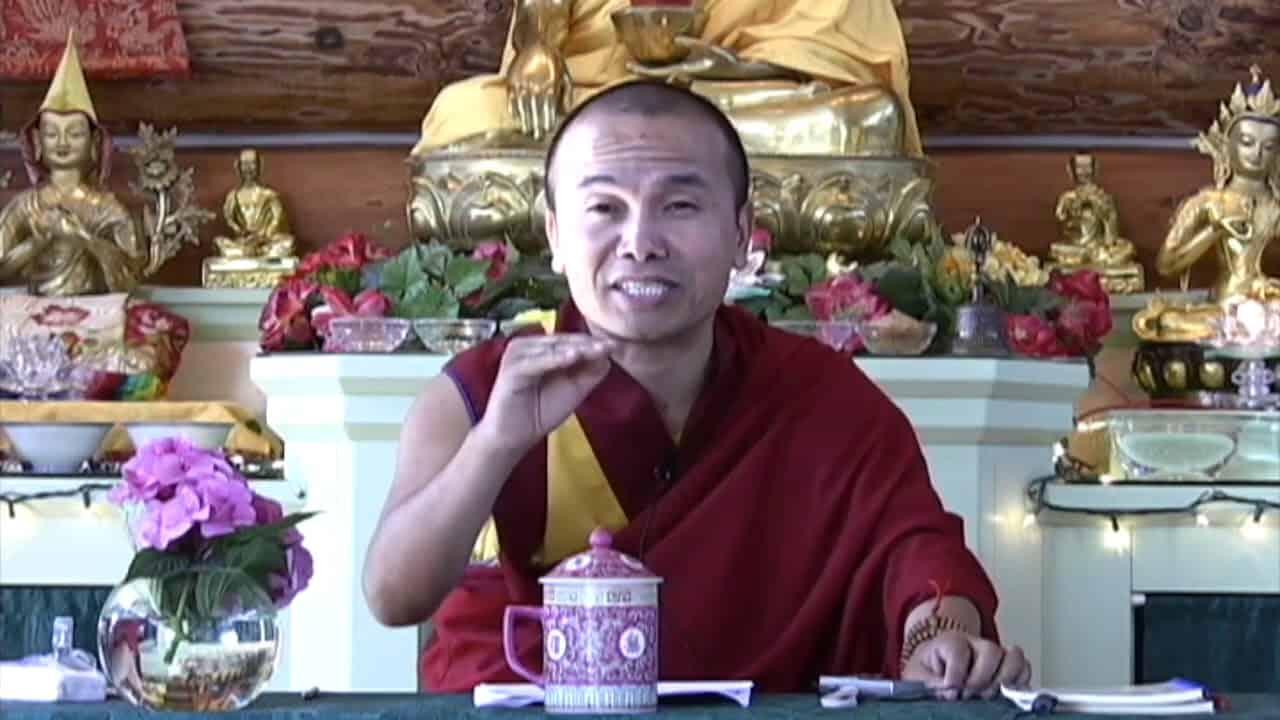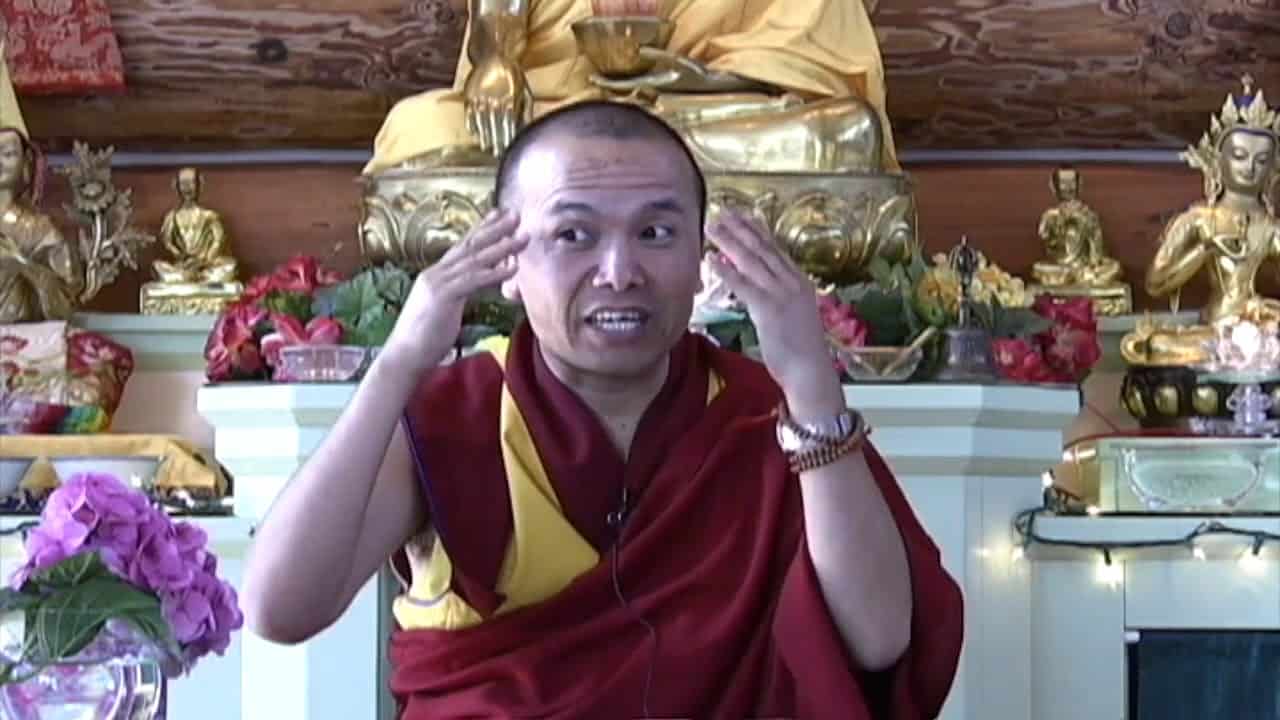Verse 18: The exalted path
Verse 18: The exalted path
Part of a series of talks on the 41 Prayers to Cultivate Bodhicitta from the Avatamsaka Sutra (the Flower Ornament Sutra).
- How to think while walking along a road or path
- Path referring to the wisdom realizing emptiness
- Seeing that where we are going has purpose
41 Prayers to Cultivate Bodhicitta: Verse 18 (download)
Today we’re going to move on to the next verse,
“May all beings set out on the exalted path.”
This is the prayer of the bodhisattva when setting out on a path.
We have a lot of paths here around the Abbey. People move around and they could use the road, but we have lots of paths. When we are walking up into the forest, when we walking down to get the mail, especially when we are walking over to the new building site, may we think, “May all beings set out on the exalted path.” The exalted path, I think, specifically refers to the wisdom realizing emptiness, because a path is actually a consciousness. When we talk about following the path, that’s just a kind of metaphor, it is not a physical path. It is the path of the consciousness. We are trying to develop certain states of consciousness. An exalted path is actually one that has realized emptiness directly.
If we talk in a very general broad sense we can consider the exalted path the path to full enlightenment. It’s really a main thing when you are starting to walk on any path, even if you are going down to the barn, or to the community room, or anywhere where you are walking, “May all sentient beings set out on the exalted path.” May they not only set out on the exalted path beginning the path but may they also reach full enlightenment at the end of the path.
It is a beautiful kind of wish and aspiration to generate whenever we are setting out somewhere because it really makes the mind very happy, very joyful, and we see that where we are going and what we are doing has a meaning and purpose.
Venerable Thubten Chodron
Venerable Chodron emphasizes the practical application of Buddha’s teachings in our daily lives and is especially skilled at explaining them in ways easily understood and practiced by Westerners. She is well known for her warm, humorous, and lucid teachings. She was ordained as a Buddhist nun in 1977 by Kyabje Ling Rinpoche in Dharamsala, India, and in 1986 she received bhikshuni (full) ordination in Taiwan. Read her full bio.


